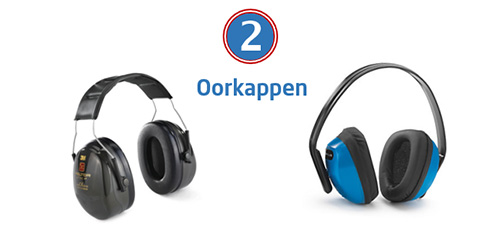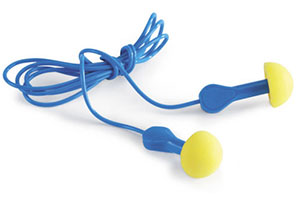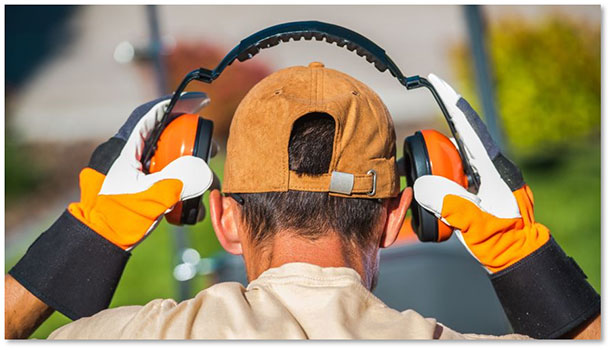Warehouses and workshops are sometimes the source of a lot of toe-curling noise. While that squeaking, drilling and sawing may seem harmless at first glance, in some cases it can lead to irreversible hearing damage. With the right hearing protection, however, you can sleep easy on both ears. Here we look at the most popular types and stop at the legal obligations for companies. Prick up your ears!
What types of hearing protection exist?
In general, we distinguish 3 types of hearing protection. These range from universal earplugs and all-purpose earmuffs to custom-made otoplastics. A suitable solution for every kind of job! Not sure where to start? Then look first of all at the duration of use of your personal protection: will you be exposed to noise for a long or short time? We base our classification below on this.
An important fact: good hearing protection should muffle noise, but should not shut it out completely. That would run the risk of you no longer hearing warning signals, and that should obviously not be the intention. Finally, the maximum noise reduction that can be achieved is about 35 decibels. More is not possible because natural sound transmission remains present via our bones and oral cavity, for example.



 The cord means you won't lose the earplugs. Ideal for those who often alternate between noisy and quiet environments.
The cord means you won't lose the earplugs. Ideal for those who often alternate between noisy and quiet environments.- With handle: insert them quickly, even with dirty hands.
- Noise reduction: 28 decibels.
- Made of memory foam: easily takes the shape of your ear canal
What does Dutch legislation say about noise pollution?
Both within and outside Dutch legislation, it is generally accepted that from 80 dB there is a risk of hearing damage. For companies, the following guidelines and obligations apply:
- When exposed to a daily dose above 80 dB(A), the employer must make hearing protectors available.
- For daily exposure to a dose above 85 dB(A), employees are obliged to wear hearing protectors.
- If exposure exceeds 85 dB(A), an action plan must be drawn up.
- If the limit of 87 dB(A) is exceeded (measured in the ear, i.e. taking hearing protectors into account), immediate action must be taken to bring the noise below this limit.
- Employers must adequately educate their staff about the dangers of noise.
- Employees are entitled to a hearing test to establish that the measures taken are effective.

Do all those decibels from above not immediately mean anything to you? Not to worry! Below, we have collected a few examples that you will undoubtedly be interested in.
Decibel |
Example |
Max. exposure  |
| 0 dB | Quiet (hearing threshold) | . |
| 30 dB | Whisper | . |
| 60 dB | Normal conversation | . |
| 70 dB | Sports hall | |
| 80 dB | A busy schoolyard | 8 hours (limit for hearing damage) |
| 90 dB | Drilling into concrete wall, busy café | 1 hour |
| 100 dB | Power drill or chainsaw | A few minutes |
| 120 dB | C concert or fire brigade siren | Pain threshold (direct hearing damage) |














